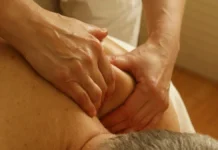Introduction
Extensor carpi ulnaris tendonitis is a condition that involves inflammation of the extensor carpi ulnaris (ECU) tendon, a crucial structure in the forearm and wrist. This tendon runs along the ulna, one of the two long bones in the forearm, and plays a vital role in wrist extension and stabilization. When this tendon becomes inflamed, it can lead to pain, swelling, and reduced functionality in the affected wrist.
Individuals experiencing extensor carpi ulnaris tendonitis often report pain on the ulnar side of the wrist, especially during activities that involve gripping, lifting, or repetitive wrist movements. The inflammation can result from overuse, improper wrist mechanics, or trauma. Athletes engaging in sports that require repetitive wrist motions, such as tennis or golf, may be more susceptible to this condition.
The diagnosis of extensor carpi ulnaris tendonitis typically involves a thorough examination by a healthcare professional, including a review of medical history and imaging studies like X-rays or MRI to rule out other potential causes of wrist pain. Early intervention is crucial to prevent the condition from progressing and causing further damage to the tendon.
Treatment for extensor carpi ulnaris tendonitis often begins with conservative measures. Resting the affected wrist, applying ice, and using anti-inflammatory medications can help reduce pain and inflammation. Additionally, modifying activities that exacerbate symptoms and incorporating proper ergonomic practices can contribute to the healing process.
Physical therapy is a key component of the management plan, focusing on strengthening the forearm muscles, improving wrist mechanics, and enhancing overall flexibility. Customized exercise programs aim to address specific weaknesses or imbalances contributing to the tendonitis.
In cases where conservative measures prove insufficient, more advanced interventions may be considered. These may include corticosteroid injections to reduce inflammation or, in rare instances, surgical procedures to repair or release the affected tendon.
Preventing recurrence involves adopting ergonomic principles during activities, maintaining proper wrist mechanics, and incorporating regular stretching and strengthening exercises into one’s routine. Athletes and individuals engaged in repetitive wrist movements should pay particular attention to warm-up routines and techniques to avoid overuse.
Anatomy of the Extensor Carpi Ulnaris
The extensor carpi ulnaris is a muscle located at the back of the forearm, playing an essential role in the extension movement of the wrist. To better understand its anatomy, let’s examine its origin, its insertion and its action.
Origin:
The extensor carpi ulnaris originates from the epitrochlea of the humerus, a small projection at the back of the elbow. It shares its origin with other muscles of the forearm, thus forming the posterior compartment muscle group.
Insertion:
The extensor carpi ulnaris tendon inserts mainly at the level of the fifth metacarpal, located at the base of the little finger of the hand. It may also have extensions to other carpal bones, helping with wrist stability and mobility.

Movement:
As the name suggests, the extensor carpi ulnaris is primarily responsible for wrist extension. When the muscle contracts, it pulls on the tendon, causing the movement of lifting the wrist upwards. This action is crucial for activities such as raising your hand, pointing, or performing gripping movements.
In addition to its role in wrist extension, the extensor carpi ulnaris also participates in other movements of the forearm, helping to coordinate the muscular actions necessary for a varied range of movements.
It is important to note that optimal health and function of the extensor carpi ulnaris depends on its harmonious integration with other forearm muscles and effective interaction with the overall musculoskeletal system. Muscle imbalances or excessive tension can lead to problems such as extensor carpi ulnaris tendinitis, highlighting the importance of a holistic approach in the management of musculoskeletal disorders.
https://www.youtube.com/embed/adGnjFVGBPU?feature=oembed&enablejsapi=1The extensor carpi ulnaris
Causes of Tendonitis
The causes of extensor carpi ulnaris tendonitis are multifaceted, often stemming from a combination of factors related to overuse, biomechanics, and individual susceptibility. One primary contributor to this condition is repetitive wrist movement, particularly those involving forceful extension or ulnar deviation. Athletes engaged in activities such as tennis, golf, or weightlifting, where these repetitive motions are prevalent, may be at an increased risk.
Overuse is a key factor, as the constant strain placed on the extensor carpi ulnaris tendon during repetitive activities can lead to microtrauma and subsequent inflammation. Poor ergonomic practices, improper technique, or using equipment that is not well-suited to one’s biomechanics can exacerbate the strain on the tendon, further increasing the likelihood of tendonitis.
Biomechanical factors play a significant role in the development of extensor carpi ulnaris tendonitis. Individuals with certain anatomical variations, such as an ulna that is longer than the radius, may be more prone to this condition. Moreover, imbalances in muscle strength or flexibility within the forearm can contribute to altered mechanics, placing additional stress on the tendon during movement.
Trauma or injury to the wrist can also be a precipitating factor for extensor carpi ulnaris tendonitis. A direct blow or sudden impact on the ulnar side of the wrist can lead to inflammation and compromise the integrity of the tendon. Additionally, individuals with inflammatory conditions such as rheumatoid arthritis may have an increased susceptibility to tendonitis.
The environment and occupational factors can contribute to the development of this condition. Jobs that involve repetitive wrist movements, forceful gripping, or the use of vibrating tools can contribute to overuse and strain on the ECU tendon. Adequate workplace ergonomics, including proper equipment and regular breaks, are crucial in preventing occupational-related cases of tendonitis.
Individual susceptibility also plays a role, as some people may inherently have a predisposition to developing tendonitis due to genetic factors or inherent variations in their musculoskeletal system. Understanding one’s risk factors and addressing them proactively can be instrumental in preventing the onset of extensor carpi ulnaris tendonitis.
- Repetitive Movements: Activities involving repetitive movements of the wrist and fingers can contribute to extensor carpi ulnaris tendonitis. This includes actions such as repeated grabbing of objects, heavy use of hand tools, or regular participation in certain sports.
- Overloads: Sudden or excessive overloading of the tendon can also lead to inflammation. This can occur during strenuous activity without an adequate warm-up, or when handling heavy objects inappropriately.
- Inadequate Posture: Improper posture during daily or work activities can place increased pressure on the extensor carpi ulnaris tendon, contributing to the development of tendinitis.
- Trauma: Direct trauma, such as a fall on the hand or sudden impact, can damage the tendon and trigger an inflammatory response.
- Occupational Factors: Certain occupations may place individuals at increased risk of extensor carpi ulnaris tendinitis due to repetitive movements or posture requirements. People working in industries such as data entry, carpentry, or heavy use of hand tools may be more prone to this condition.
- Underlying Medical Conditions: Certain medical conditions, such as rheumatoid arthritis or gout, may increase the risk of developing tendinitis. These conditions can influence tendon health and increase the likelihood of inflammation.
- Age: The natural aging process can cause the elasticity of tendons to decrease, making them more susceptible to injury and inflammation.

In the image, the golfer’s stance places stress on the wrist, particularly on the ulnar (outer) side, where the tendon becomes irritated due to repetitive strain. This inflammation, also known as ulnar tendonitis, can result from overuse, poor technique, or lack of proper warm-up. Symptoms often include pain, tenderness, and swelling at the wrist, especially when gripping or rotating the forearm.
To prevent this condition, individuals should focus on improving posture, strengthening forearm muscles, and using ergonomic grips or equipment. Proper warm-up exercises and stretching before physical activity can also reduce strain on the tendon. If inflammation occurs, rest, ice application, and anti-inflammatory treatments can alleviate pain. Physical therapy and adjustments in movement mechanics may be necessary for recovery.
Symptoms and Clinical Presentation
- Pain: Pain is one of the most common symptoms of extensor carpi ulnaris tendonitis. It usually occurs on the back of the forearm, near the wrist. Pain may be felt during wrist and finger movements, as well as at rest, depending on the severity of the inflammation.
- Swelling: Mild swelling may accompany tendonitis, indicating an inflammatory reaction in the tendon. This swelling can contribute to the feeling of stiffness and tension in the affected area.
- Tenderness to touch: The inflamed tendon often becomes tender to touch. Direct pressure on the affected area may cause increased pain, and palpation may reveal specific areas of discomfort.
- Muscle weakness: Some individuals may experience decreased muscle strength in the affected area. This may manifest as difficulty performing certain activities that require wrist extension, such as lifting objects or performing repetitive movements.
- Crepitations or grinding: Some patients report sensations of crackles or grinding in the affected tendon during wrist movements. This may be associated with abnormal friction between the inflamed tendon and surrounding structures.
- Difficulty performing certain movements: Due to pain and stiffness, individuals with extensor carpi ulnaris tendinitis may have difficulty performing certain wrist and finger movements. It may interfere with daily, work, or recreational activities.
Diagnosis
The diagnosis of extensor carpi ulnaris tendinitis is usually based on a comprehensive clinical evaluation performed by a healthcare professional. Here are the general steps of the diagnostic process:
- History: The healthcare professional will begin by collecting detailed information about the patient’s medical history, including current symptoms, recent activities, history of injuries, and aggravating factors.
- Physical Examination: Gentle palpation of the affected area may be performed to assess tenderness, swelling, and the presence of nodules or masses. The professional will also examine the range of motion of the wrist and fingers.
- Functional Tests: Specific tests can be performed to evaluate the strength, flexibility and function of the extensor carpi ulnaris tendon. These tests may include wrist and finger extension movements, as well as resistance exercises.
- Additional Tests: In some cases, imaging tests such as X-rays, ultrasounds, or MRIs may be ordered to confirm the diagnosis and rule out other possible causes of symptoms, such as a fracture or torn tendon.
- Differential Assessment: The healthcare professional may also perform a differential assessment to rule out other conditions that present with similar symptoms, such as tenosynovitis, arthritis, or other wrist disorders.
Differential diagnosis
- Carpal tunnel syndrome: This condition results from compression of the median nerve at the wrist. Symptoms may include pain, tingling and numbness in the hand and fingers.
- Wrist Arthritis: Inflammation of the wrist joints due to arthritic conditions, such as rheumatoid arthritis or osteoarthritis, can cause pain and decreased function.
- De Quervain’s tenosynovitis: Inflammation of the thumb tendons can cause pain in the wrist and forearm area.
- Wrist Fracture: A fracture or injury to the wrist bones can cause similar symptoms, such as pain and decreased mobility.
- Bursitis: Inflammation of the synovial bursae surrounding the wrist tendons can also lead to pain and difficulty with movement.
- Cervical Nerve Compression: Problems in the cervical spine may manifest with similar symptoms, requiring careful evaluation.
- Tendonitis of other forearm muscles: The tendons of other forearm muscles, such as the flexor muscle tendons, may also be prone to inflammation.
Treatment Approaches
Treatment of extensor carpi ulnaris tendonitis aims to relieve pain, reduce inflammation, restore normal tendon function, and prevent recurrence. There are several treatment approaches, including osteopathy and trigger point management, that can be integrated for a comprehensive care plan.
- Osteopathy: Osteopathy sessions can play a crucial role in the treatment of extensor carpi ulnaris tendonitis. Osteopaths use gentle manual techniques to assess and treat the mobility of muscles, tendons and associated joints. The goal is to restore musculoskeletal balance, promote blood and lymphatic circulation, and support the natural healing process.
- Trigger Point Management: Trigger points, also called trigger points, are areas of tension located in the muscles. In the case of extensor carpi ulnaris tendonitis, trigger point management may involve myofascial release techniques to release muscle knots, reduce tension, and improve flexibility in the affected muscle.
- Anti-inflammatory Medications: Nonsteroidal anti-inflammatory medications (NSAIDs), such as ibuprofen, may be prescribed to reduce inflammation and relieve pain. However, their long-term use should be supervised by a healthcare professional due to possible side effects.
- Rest and Protection: It is essential to allow the extensor carpi ulnaris tendon to rest. Using support devices, such as splints or bandages, can help protect the affected area while it heals.
- Rehabilitation Exercises: Specific exercises may be prescribed to gradually strengthen the tendon and improve wrist stability. These exercises should be tailored to each individual and supervised by a healthcare professional.
- Stress Management: Stress can influence muscle tension. Stress management techniques, such as meditation or relaxation, may be recommended to foster an environment conducive to healing.
- Patient Education: Patients are often educated about contributing factors to tendonitis, such as repetitive movements, incorrect posture, or overtraining. Adjustments in lifestyle or work may be suggested to prevent recurrence.
Prevention Strategies
Prevention of extensor carpi ulnaris tendonitis relies on measures to reduce potential risk factors and promote musculoskeletal health. Here are some recommendations to prevent the occurrence of this condition:
- Ergonomics at Work: For those who perform repetitive tasks, it is essential to optimize the ergonomics of the workstation. This includes adjusting seat height, position of computer screens, and using ergonomic tools to minimize strain on muscles and tendons.
- Break and Stretch: Incorporating regular breaks during repetitive activities can help prevent excessive muscle fatigue. Specific wrist and forearm stretches can help keep muscles and tendons flexible.
- Muscle Strengthening: A strengthening exercise program targeting the forearm muscles can help improve wrist stability. Simple exercises, such as wrist flexion and extension with light weights, can be included in a prevention program.
- Proper Lifting Techniques: When handling heavy objects, it is important to use proper lifting techniques to avoid excessive strain on the wrist muscles and tendons.
- Stress Control: Stress can contribute to muscle tension. Implementing stress management techniques, such as meditation, deep breathing, or yoga, can help maintain appropriate muscle relaxation.
- Warming Up Before Physical Activity: Before engaging in intensive physical activities or repetitive movements, a proper warm-up can prepare muscles and tendons for exercise, thereby reducing the risk of injury.
- Maintaining Good Posture: Proper posture during daily activities and at work is essential to avoid excessive strain on the wrist muscles and tendons.
- Hydration and Nutrition: Adequate hydration and a balanced diet help maintain healthy tissues, including tendons. Make sure you stay well hydrated and include essential nutrients in your diet.
- Physical Activity Adjustments: If you participate in strenuous physical activities or sports that frequently put stress on the wrist, be sure to follow proper techniques and adjust the intensity of the activity based on your level of activity. physical condition.
Rehabilitation Exercises
Specific stretches and exercises can play a crucial role in the management and prevention of extensor carpi ulnaris tendonitis. It is important to emphasize that these exercises should be performed carefully and under the supervision of a healthcare professional, especially in cases of pain or inflammation.
- Specific stretches:
- Dorsal and Palmar Flexion Wrist Stretch: Hold your arm in front of you, palm down, and use your opposite hand to apply light downward pressure, stretching the wrist. Repeat the stretch with your palm tilting upward.
- Forearm Stretch: Extend your arm in front of you, palm up, and use the opposite hand to bend your fingers down, stretching the forearm muscles.
- Muscle strengthening:
- Resistance Exercises for Forearm Muscles: Use a resistance band or small weight to perform dorsi and volar wrist flexion exercises, strengthening the extensor carpi ulnaris muscles.
- Stress ball exercises: By squeezing and releasing a stress ball, you can strengthen the forearm muscles in a controlled manner.
- Mobility exercises:
- Wrist rotation: Make circular movements with the wrist in both directions to improve mobility.
- Finger Extension: Extend and bend the fingers repeatedly to maintain joint flexibility.
- Coordination exercises:
- Using manipulatives: Exercises that involve manipulating objects of different sizes can improve coordination and muscle strength in the wrist and forearm.
- Relaxation techniques:
- Overall relaxation techniques: Practicing relaxation techniques, such as meditation or deep breathing, can help reduce overall stress, helping to relax muscles.
Conclusion
In conclusion, extensor carpi ulnaris tendonitis is a condition that can have a significant impact on quality of life due to inflammation of the tendon associated with this crucial muscle for wrist and finger extension. Symptoms such as pain, stiffness, and decreased function can interfere with daily and work activities.
Managing this condition goes beyond just treating symptoms; it also includes prevention and treatment to minimize recurrence. In the prevention process, ergonomic adjustments, regular breaks, stretching, and muscle strengthening can play an essential role.
Regarding treatment, in addition to classic approaches, osteopathy offers a complementary perspective by treating trigger points and promoting the overall balance of the musculoskeletal system. This holistic approach can help reduce tension, improve mobility and support the natural healing process.
It is crucial to emphasize that collaboration between the patient and health professionals, whether osteopaths, doctors or other practitioners, is essential for an optimal result. Following advice, regular treatment and changing lifestyle habits all contribute to a successful recovery.
Ultimately, extensor carpi ulnaris tendonitis can be effectively managed with an integrative approach, providing individuals with the opportunity to regain normal functionality and maintain good musculoskeletal health. It is recommended to consult a qualified healthcare professional for an accurate diagnosis and advice tailored to the individual situation.
References
- Prentice, W. E. (2017). Principles of Athletic Training: A Guide to Evidence-Based Clinical Practice (16th Edition). McGraw-Hill Education.
- This textbook covers a wide range of musculoskeletal injuries, including tendinitis, with detailed information on prevention, diagnosis, and treatment.
- Brukner, P., & Khan, K. (2017). Brukner & Khan’s Clinical Sports Medicine (5th Edition). McGraw-Hill Education.
- A key reference in sports medicine, this book provides in-depth coverage of tendon injuries, including ECU tendinitis.
- Maquirriain, J., & Andrianopoulos, N. (2013). Extensor Carpi Ulnaris Tendinitis in Tennis Players. British Journal of Sports Medicine, 47(17), e4.
- This article specifically explores the incidence of ECU tendinitis in tennis players, offering insights into causes and treatment approaches.
- Harmon, K. G., & Irion, G. L. (1992). Extensor Carpi Ulnaris Tendinitis: A Cause of Ulnar Wrist Pain. The American Journal of Sports Medicine, 20(5), 672-674.
- This paper discusses the causes and treatment of ECU tendinitis, with a focus on ulnar wrist pain.
- American Academy of Orthopaedic Surgeons (AAOS). (2021). Wrist Tendonitis. Retrieved from https://www.orthoinfo.org
- An online resource providing accessible, up-to-date information on various types of wrist tendinitis, including ECU tendinitis.
- Green, D. P., & Hotchkiss, R. N. (2005). Green’s Operative Hand Surgery (5th Edition). Elsevier.
- This book is a reference for hand surgeons and includes detailed chapters on tendinitis and other wrist conditions.























